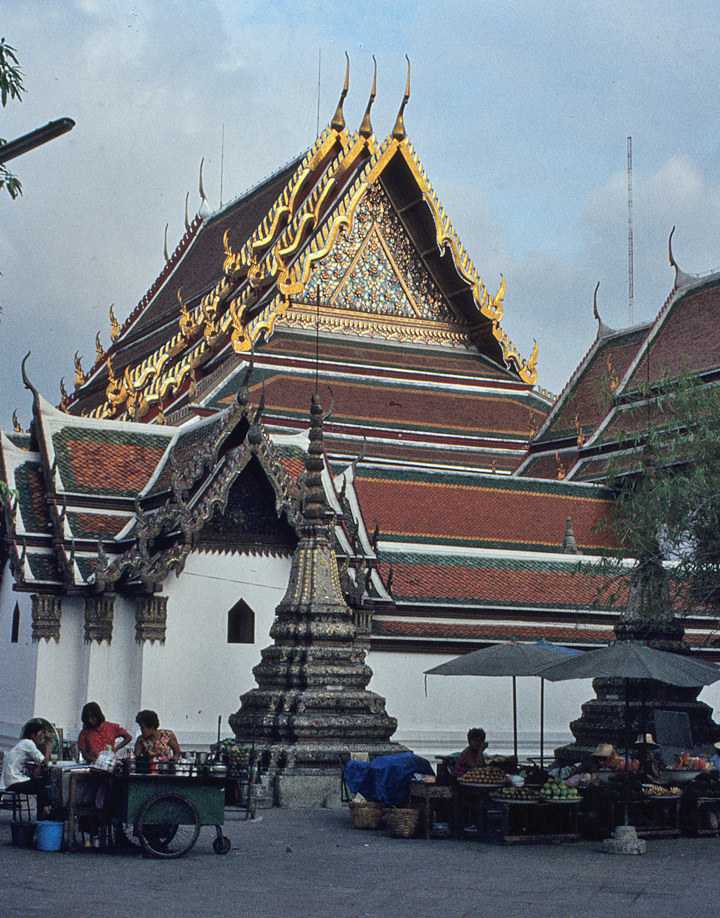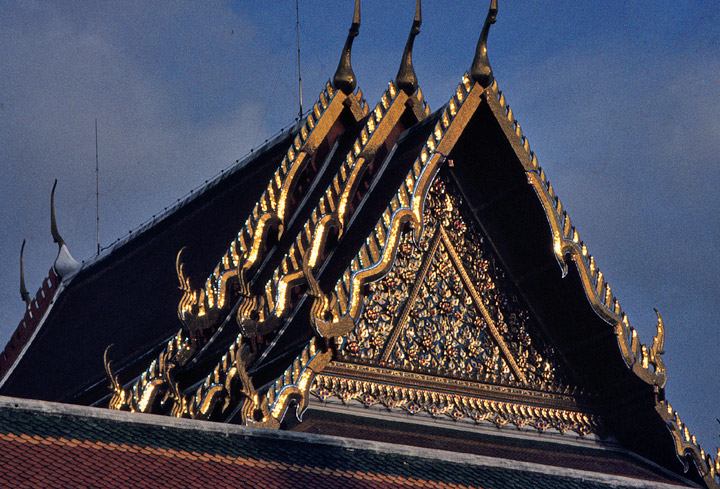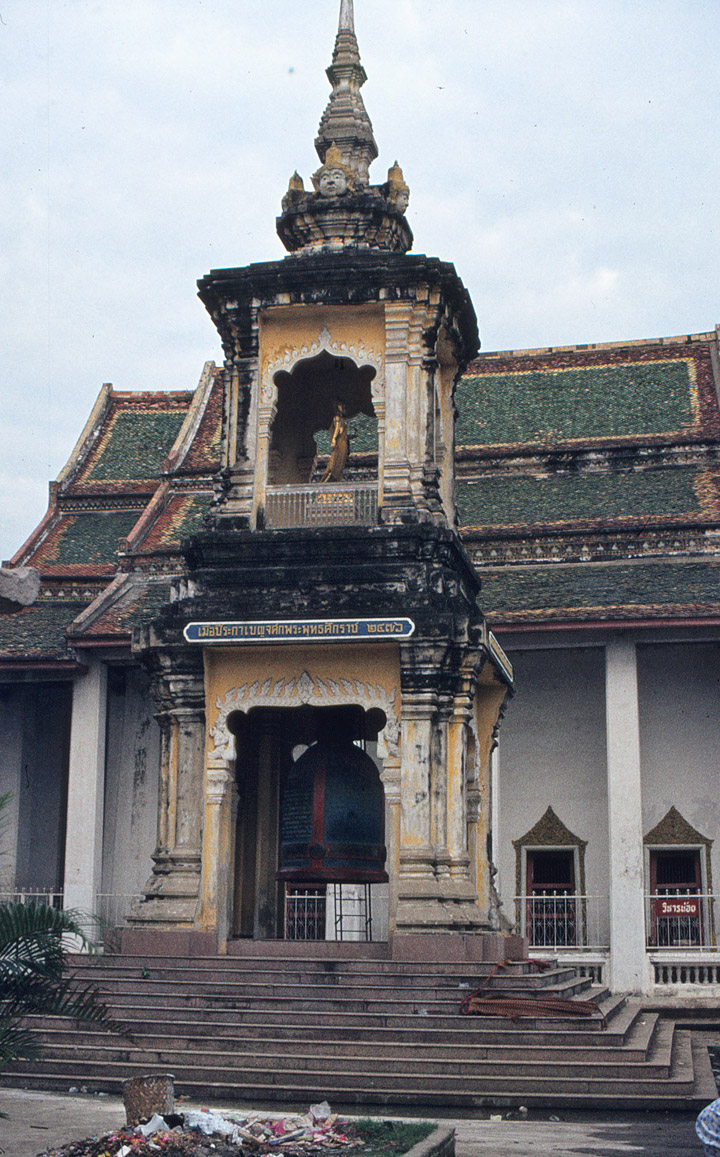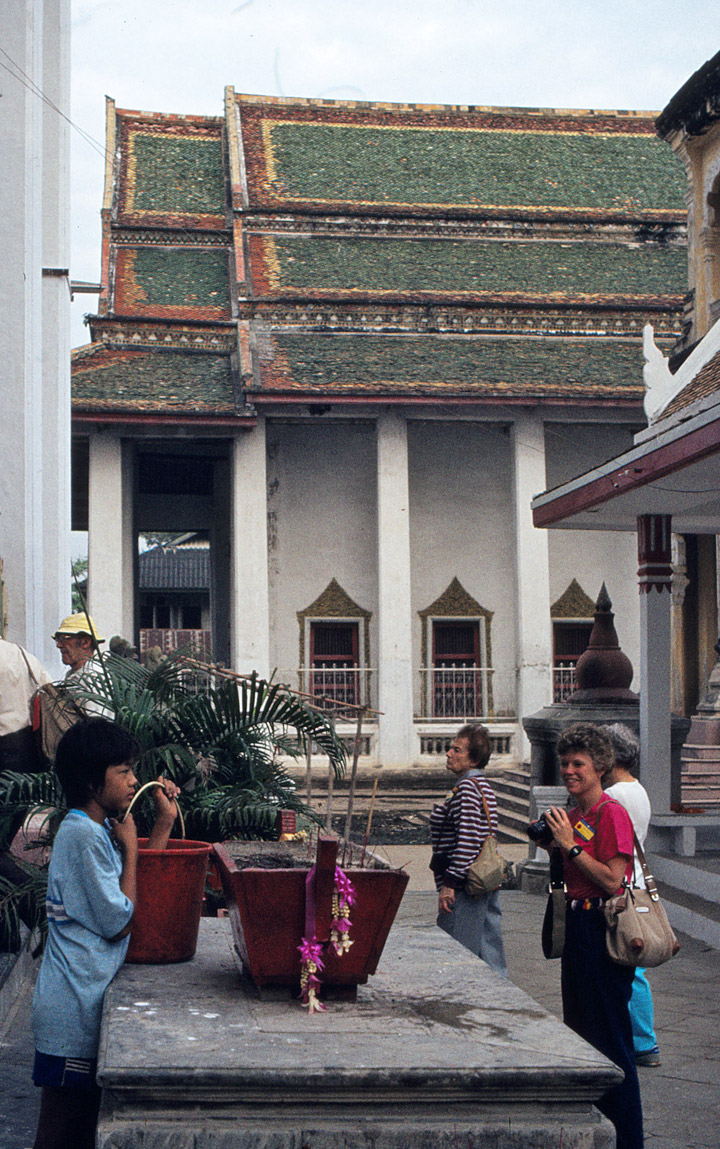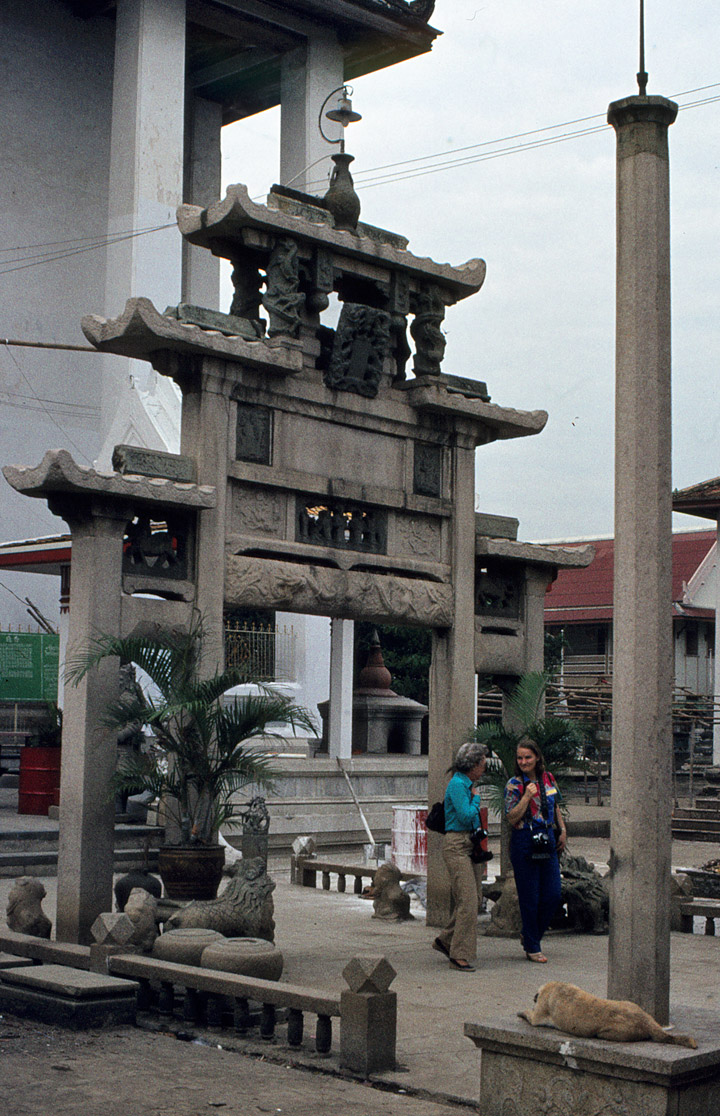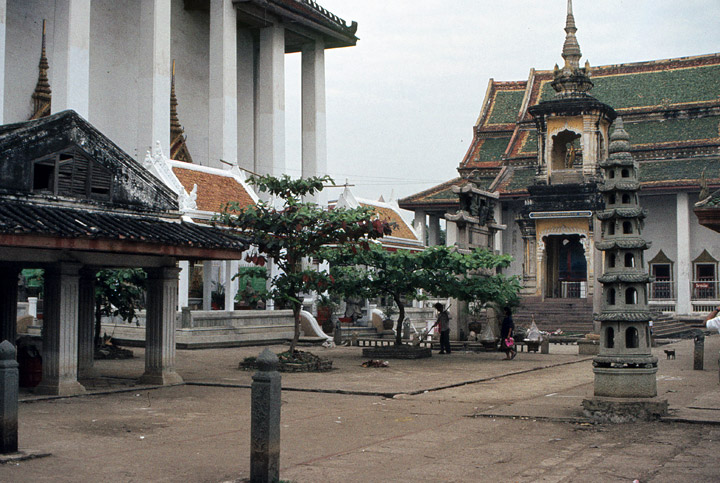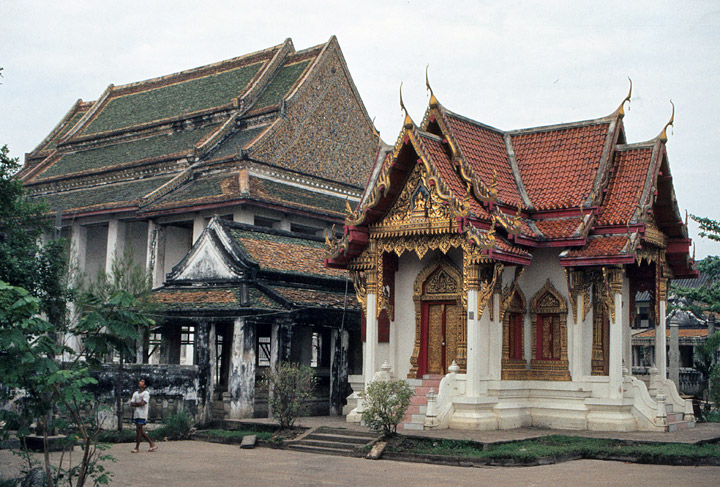

Bangkok 1984
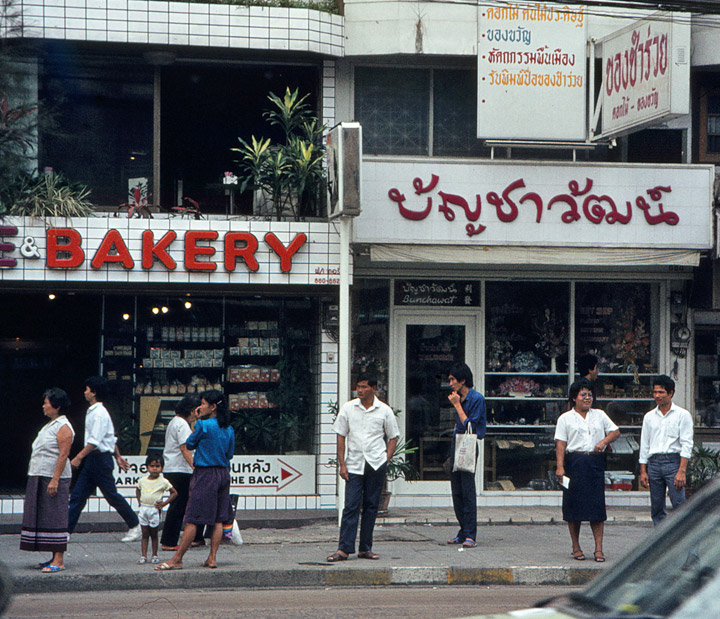
Bangkok, known in Thai as Krung Thep Maha Nakhon, กรุงเทพมหานคร or Krung Thep (กรุงเทพฯ ) for short, is the capital and primate city of Thailand. It is located on the banks of the Chao Phraya River, near the Gulf of Thailand.
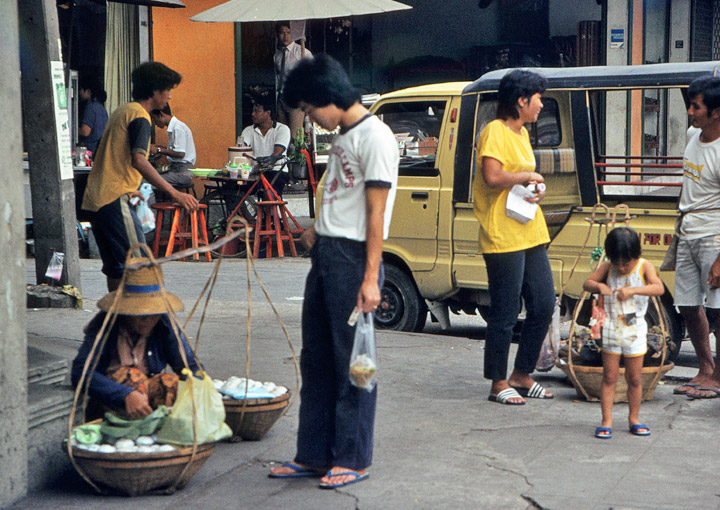
Bangkok is the 22nd most populous city in the world. Bangkok has a registered
population nearing 7 million people, however, due to discrepancies in the number
of people residing without a residence certificate, the actual number could be
as high as 15 million. Even then, the number of people who flux in the capital
from neighboring provinces during the day for jobs has given way to estimates as
high as 20 million. There are no complete approximations of the metropolitan
population, the city is a conglomerate spanning 5 provinces. The areas bounded
by the Bangkok Metropolitan Administration (BMA) only cover about half of the
city's true size. There has been much controversy over the population and size
of Bangkok.
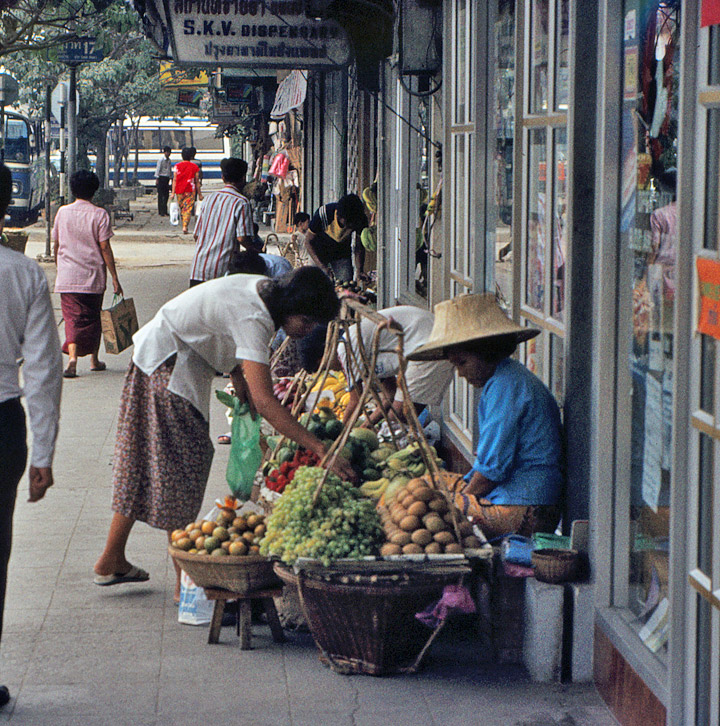
Bangkok is a magnet for foreigners escaping turmoil in their homeland or simply
for business. Bangkok has long been the gateway to Asia for foreign interests
seeking new markets. The city is a major economic and financial center of
Southeast Asia. Bangkok has one of the fastest rates in the world for
construction of high rise buildings. The city's wealth of cultural sites makes
it one of the world's most popular tourist destinations.

noble person house
The Bangkok Province borders six other provinces: Nonthaburi, Pathum Thani, Chachoengsao, Samut Prakan, Samut Sakhon and Nakhon Pathom.
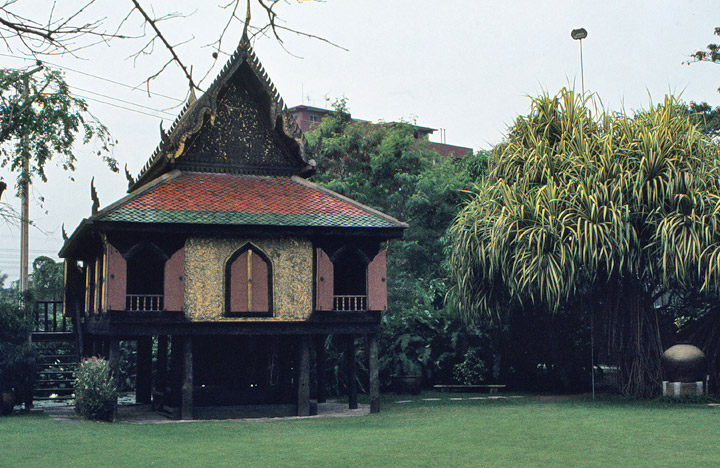
The town of Bangkok(บางกอก) began as a small trading center and port community
on the west bank of the Chao Phraya River serving the Ayutthaya Kingdom, the
precursor of modern Thailand which existed from 1350 to 1767. It is believed
that the town's name derived from either Bang Makok, bang being the Central Thai
name for towns or villages situated on the bank of a river, and makok (มะกอก)
being the Thai name of either Spondias pinnata, Spondias mombin or Elaeocarpus
hygrophilus (plants producing olive-like fruits), or Bang Koh, koh meaning
"island," a reference to the area's landscape which was carved by rivers and
canals.
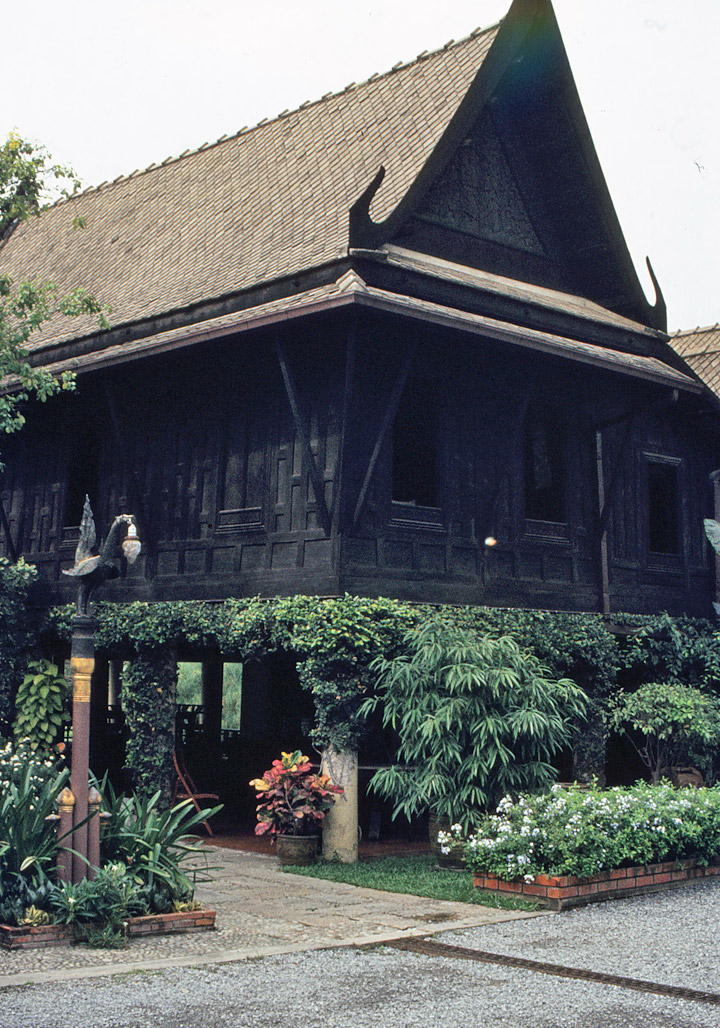
After the fall of Ayutthaya to the Burmese Kingdom in 1767, the newly declared
King Taksin established a new capital in the area of then-Bangkok, which became
known as Thonburi. When Taksin's reign ended in 1782, King Buddha Yodfa
Chulaloke reconstructed the capital on the east bank of the river and gave the
city a ceremonial name (see below) which became shortened to its current
official name, Krung Thep Maha Nakhon (which, similarly to "Los Angeles" means
"city of angels"). The new city, however, also inherited the name Bangkok, which
continued to be used by foreigners to refer to the entire city and became its
official English name, while in Thai the name still refers only to the old
district on the west bank of the river. The city has since vastly modernized and
undergone numerous changes, including the introduction of transportation and
utility infrastructure in the reigns of King Mongkut and King Chulalongkorn, and
quickly developed into the economic center of Thailand.
Text from Wikipedia
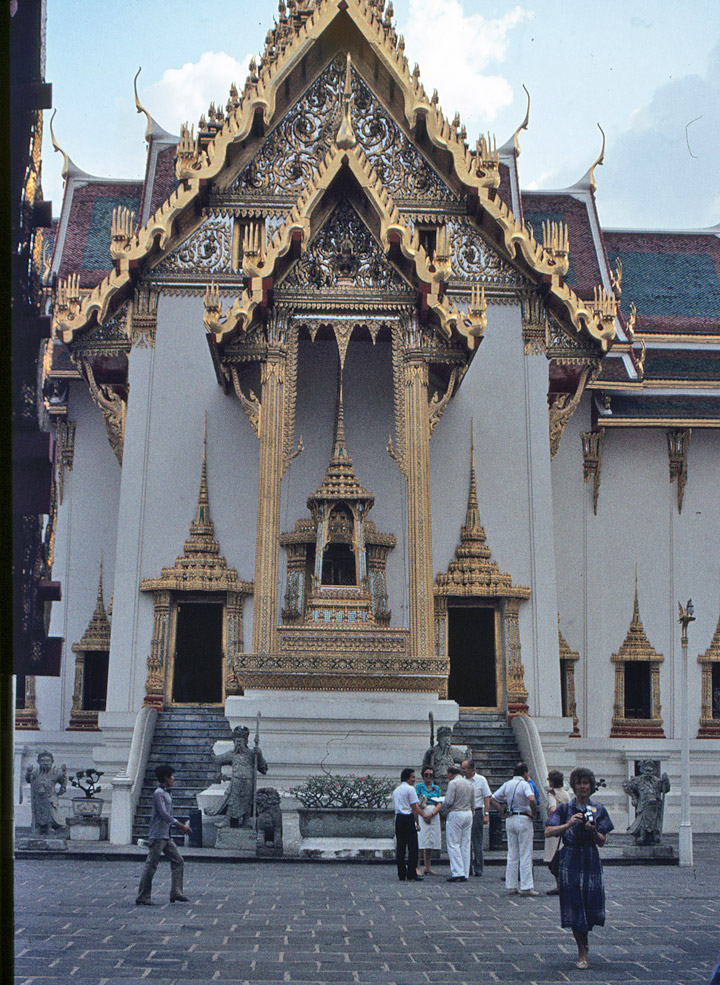
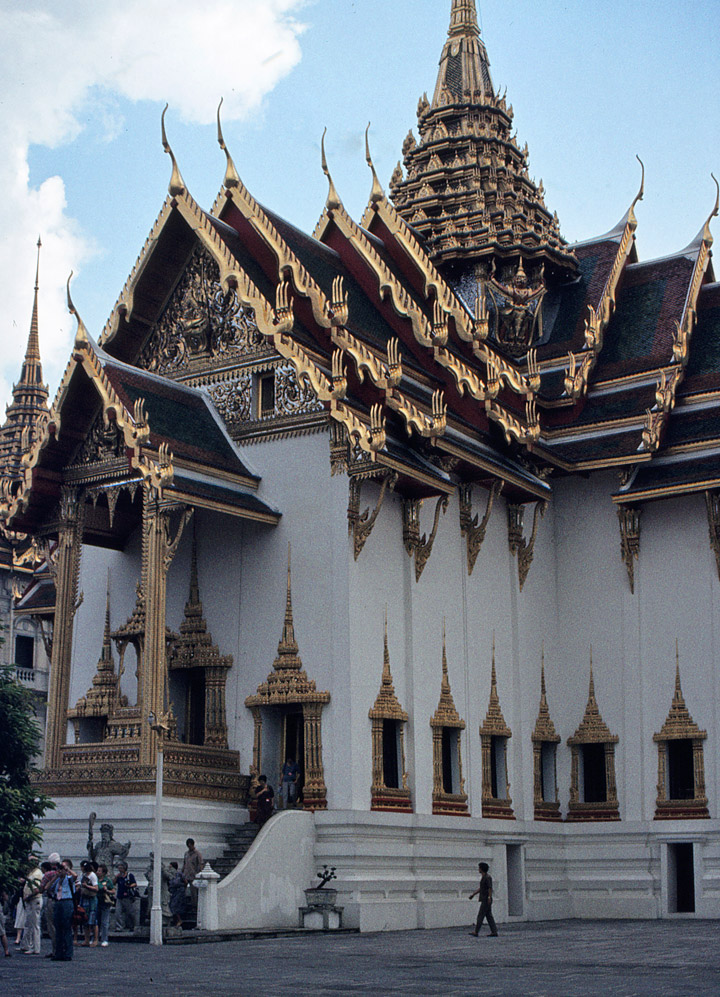
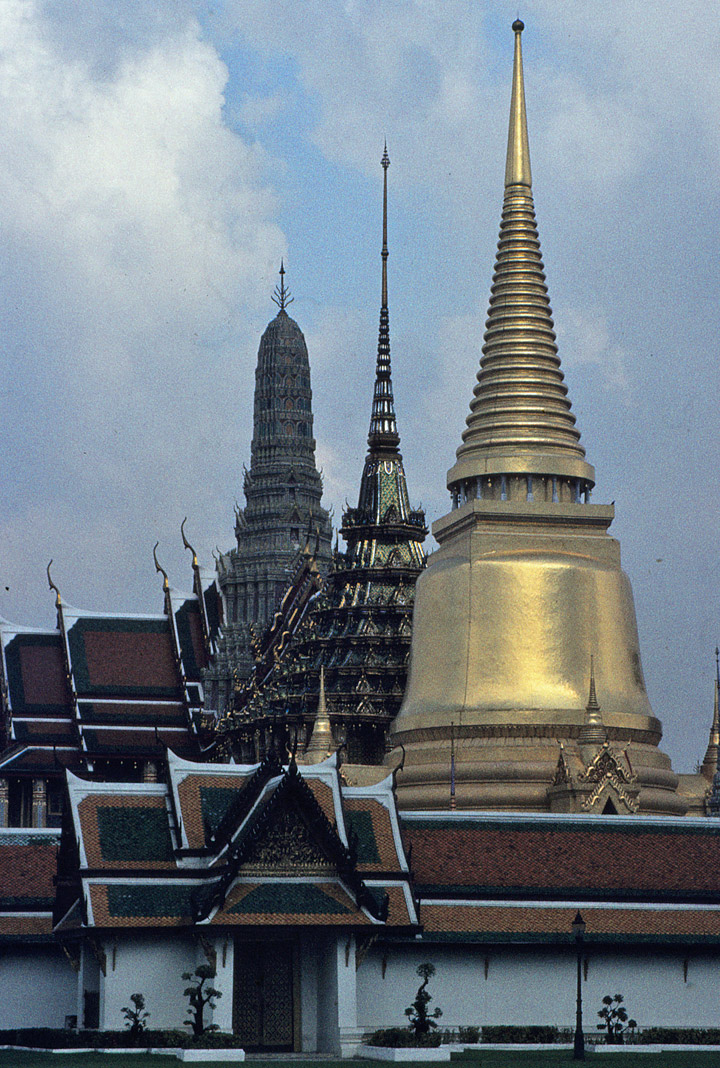
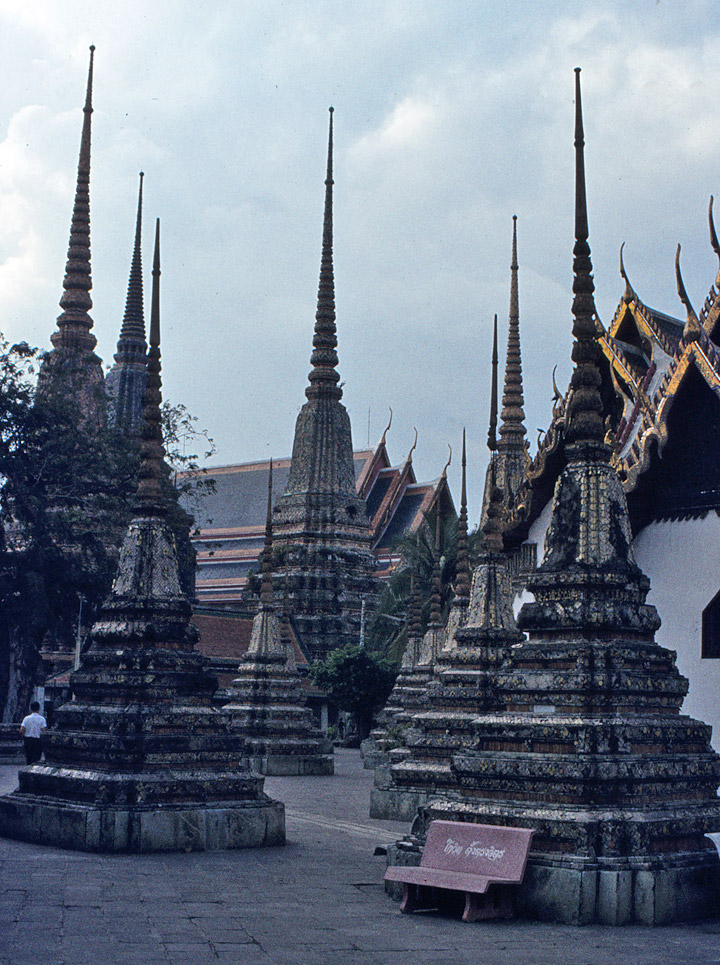
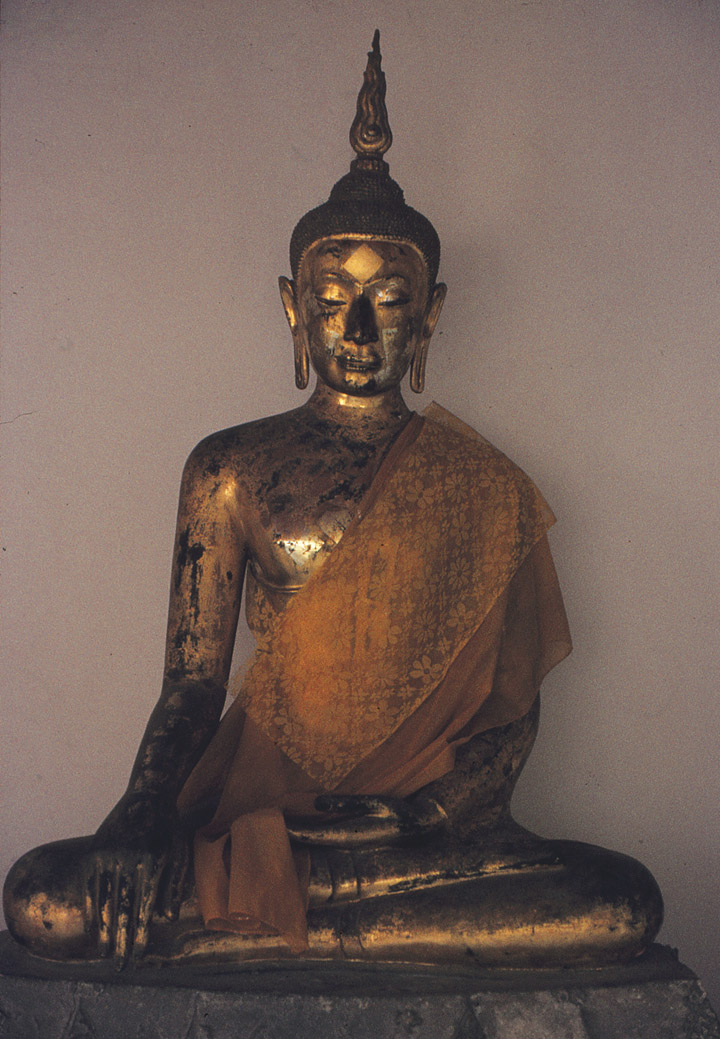
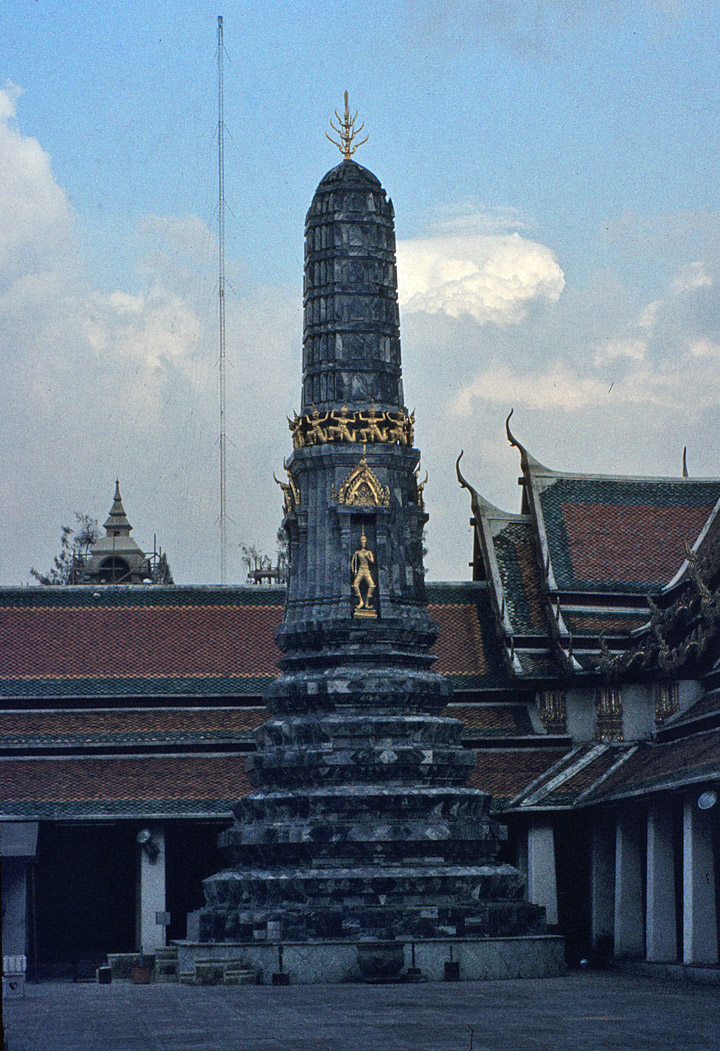
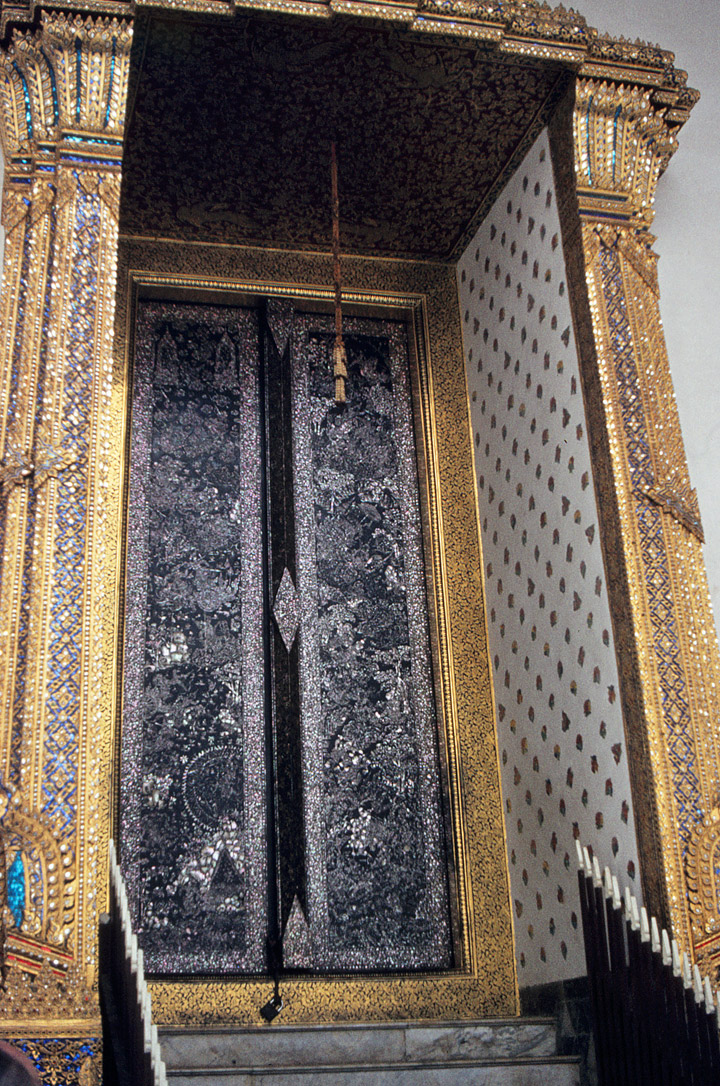
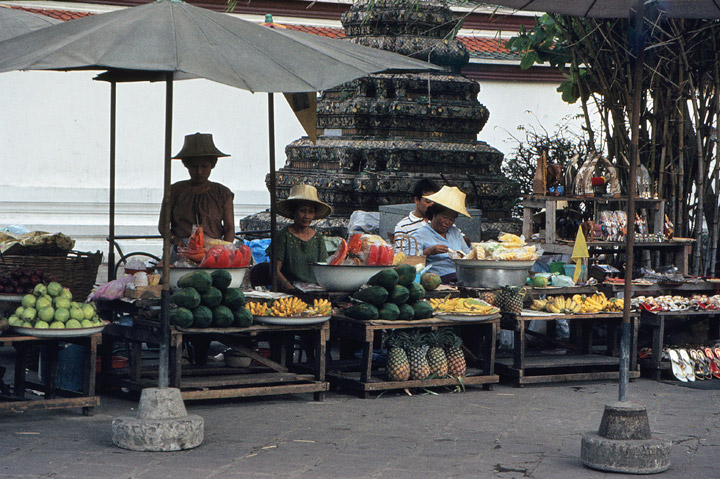

Buddha foot
